- SPIN-2019
- IEEE Xplore Digital Library (SPIN 2019)
- SPIN-2018
- IEEE Xplore Digital Library (SPIN 2018)
- IEEE Xplore Digital Library (SPIN 2017)
- IEEE Xplore Digital Library(SPIN 2016)
- IEEE Xplore Digital Library(SPIN 2015)
- IEEE Xplore Digital Library(SPIN 2014)
- Sightseeing
- How To Reach
- SPIN Knowledge Group
Sight Seeing
• The organizers will provide assistance to visit to Taj Mahal and sightseeing on nominal rates.
• Delegates can form a group for sightseeing to avail discounted rates, organizers will provide assistance.
• Free Local guide volunteers (English Speaking) for sightseeing will be provided to the foreign delegates.
Tourist Place in Delhi-NCR Region
Taj Mahal, Agra
The Taj Mahal is considered the finest example of Mughal architecture, a style that combine elements from Persian, Indian, and Islamic architectural styles. In 1983, the Taj Mahal became a UNESCO World Heritage Site and was cited as "the jewel of Muslim art in India and one of the universally admired masterpieces of the world's heritage." .
The moods of the Taj vary from dawn to dusk. It looks milky white in the soft light that characterizes early morning, while the afternoon sun makes it glisten bright and dazzling in the overhead sunlight, almost looking like a jewel against the opaque blue of the skyline and then comes a moonlit Taj breaking into the night sky, majestic and simply beautiful in a sense that cannot be put into words. No wonder if millions of people chose it amongst the World’s top wonders.
It is situated at a distance nearly 210Km. from Noida(Amity University) and can be reached to the site in 2 hours and 15 minutes by road.
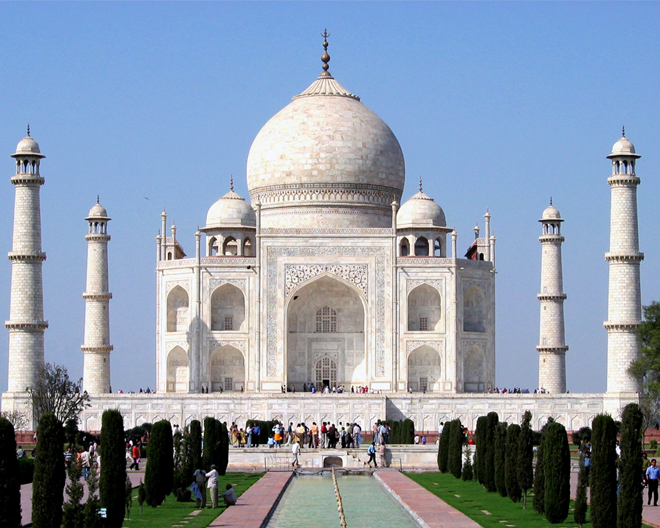
Quitab Minar, Delhi
Qutab Minar, is the tallest minaret in India, originally an ancient Islamic Monument and is a UNESCO World Heritage Site. It is surrounded by several other ancient and medieval structures and ruins, collectively known as Qutub Complex. The Qutub Complex houses several attractions within its premises. One of them is The Iron Pillar. The base of the iron pillar is tied to its foundations by small pieces of iron. It rises to a height of 7.20 m, with 93 cm buried below the floor level. It is a wonder that iron has not rusted despite the sixteen centuries that have passed since its existence. The pillar is an excellent example of advanced metallurgy of those times and is a marvel in itself. The metal of the pillar is identified to be almost pure malleable iron.
An easy visit to this site (Qutub Minar, Mehrauli, New Delhi) from Noida is possible through road (27.0 Km, 40 mins) and a comfortable journey can be made from Botanical Garden Metro Station (nearest to Amity University) - Rajeev Chowk Metro station – Qutab Minar Metro Station.
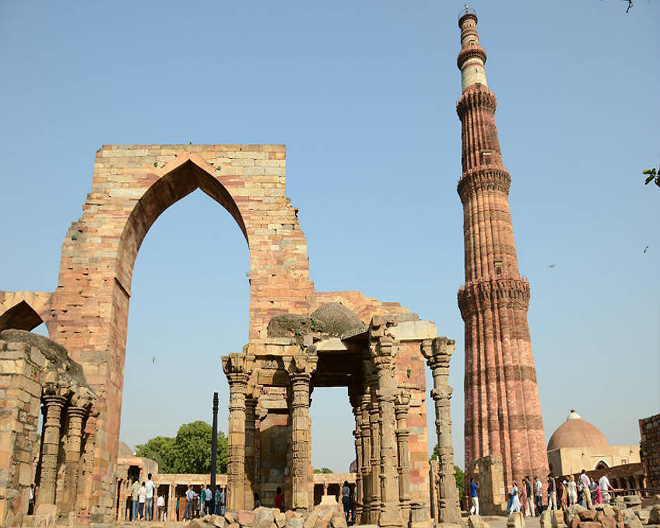
Red Fort, Delhi
Red Fort derives its name from the extensive use of red sandstone on the massive walls that surrounds the fort.The Red sandstone walls of the massive Red Fort (Lal Qila) rise 33-m above the clamour of Old Delhi. The walls, built in 1638, were designed to keep out invaders, now they mainly keep out the noise and confusion of the city. The vaulted arcade of Chatta Chowk, a bazaar selling tourist trinkets, leads into the huge fort compound. Inside is a veritable treasure trove of buildings, including the Drum House, the Hall of Public Audiences, the white marble Hall of Private Audiences, the Pearl Mosque,Royal Baths Palace of Color. The fort lies along the Yamuna River, which fed the moats that surround most of the walls.
It is around 17 Km from Noida, and can be reach by road (approx. 30 mins) and by Metro rail from Botanical Garden Metro Station (nearest to Amity University) to Chadni Chowk Metro station.
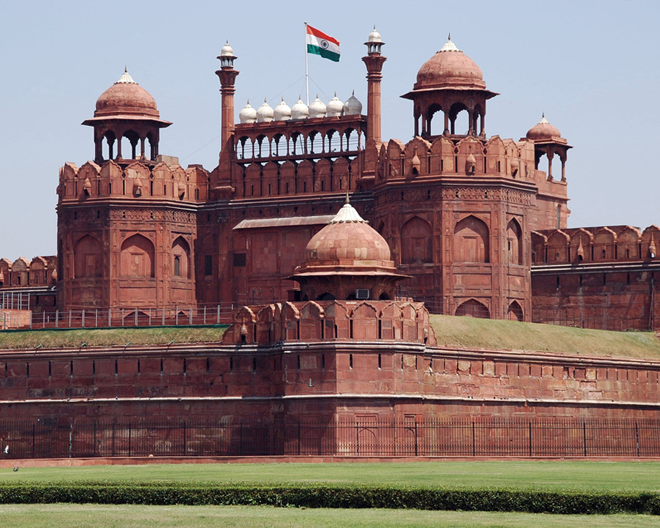
Akshardham Temple, Delhi
A traditional mandir (temple) dedicated to Bhagwan Swaminarayan that reflects the beauty and spirituality of India’s ancient art, culture, and architecture. The main monument, at the center of the complex, is 141-foot (43 m) high, 316-foot (96 m) wide, and 370-foot (110 m) long,and is covered top to bottom with carved details of flora,fauna,dancers, musicians, and deities. The temple, at the center of the complex, was built according to the Vastu Shastra and Pancharatra Shastra. In addition to the large central temple crafted entirely of stone, the complex features exhibitions on incidents from the life of Swaminarayan and the history of India.
It is around 10 Km away from Amity University and can reach here by road and by Metro rail from Botanical Garden Metro Station (nearest to Amity University) to Akshardham Metro station.
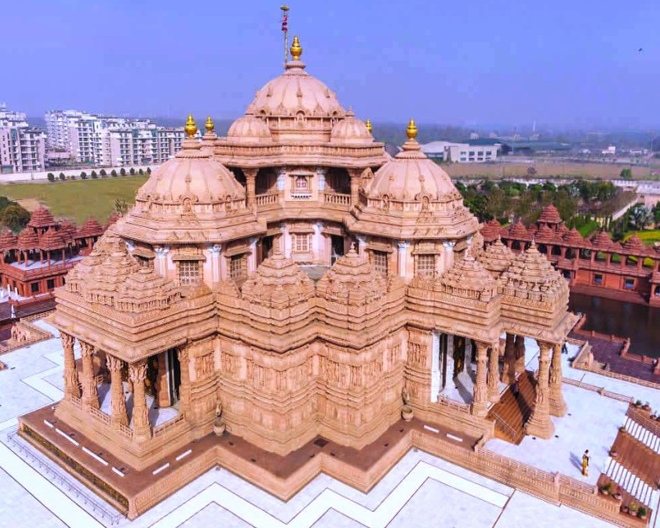
India Gate, Delhi
At the centre of New Delhi stands the 42 m high India Gate, an Arc-de-Triomphe like archway in the middle of a crossroad. Almost similar to its French counterpart, it commemorates the 70,000 Indian soldiers who lost their lives fighting for the British Army during the World War I. The memorial bears the names of more than 13,516 British and Indian soldiers killed in the Northwestern Frontier in the Afghan war of 1919. Another memorial,Amar Jawan Jyoti The eternal flame burns day and night under the arch to remind the nation of soldiers who laid down their lives in the Indo-Pakistan War of December 1971. During nightfall, India Gate is dramatically floodlit while the fountains nearby make a lovely display with coloured lights.
It is around 17 Km from Noida, and can be reach by road (approx. 30 mins) and by Metro rail from Botanical Garden Metro Station (nearest to Amity University) to Central Secretariat Metro station.
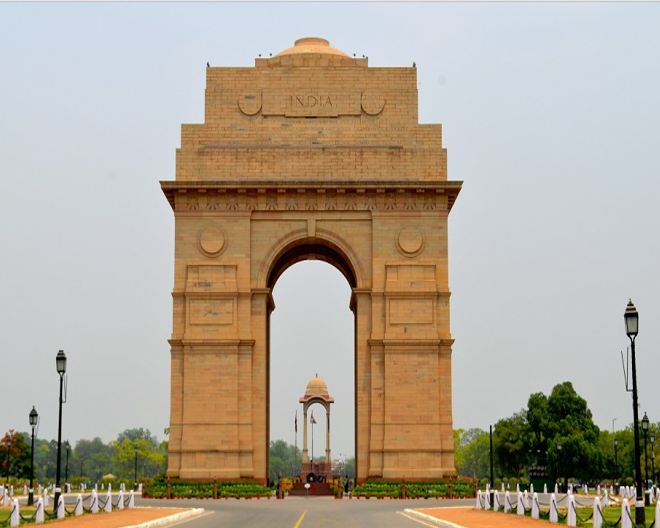
Humayun’s Tomb, Delhi
This magnificent garden tomb is the first substantial example ofMughal architecture in India. It was built in 1565 A.D. nine years after the death of Humayun, by his senior widow Bega Begam. Inside the walled enclosure the most notable features are the garden squares (chaharbagh) with pathways water channels, centrally located well proportional mausoleum topped by double dome.
It is around 13 Km from Amity University and can reach by road and by Metro rail from Botanical Garden Metro Station (nearest to Amity University) to Pragati Maidan Metro station (nearest to Humayun’s Tomb).
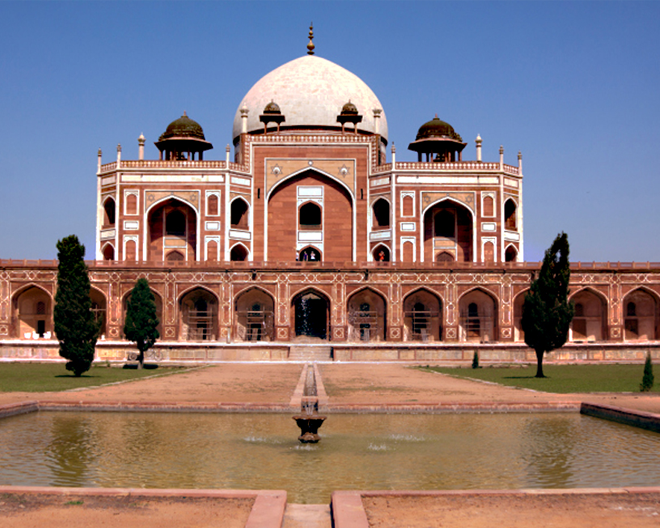
Jantar Mantar, Delhi
Jantar Mantar(Yantra - instruments, mantra - formulae) was constrcted in 1724. Maharaja Jai Singh of Jaipur who built this observatory went on to build other observatories in Ujjain, Varanasi and Mathura. Jai Singh had found the existing astronomical instruments too small to take correct measurements and so he built these larger and more accurate instruments.
The instruments at Jantar Mantar are fascinating for their ingenuity, but accurate observations can no longer be made from here because of the tall buildings around.
It is around 17 Km from Amity University and can reach by road and by Metro rail from Botanical Garden Metro Station (nearest to Amity University) to Patel Chowk Metro station.
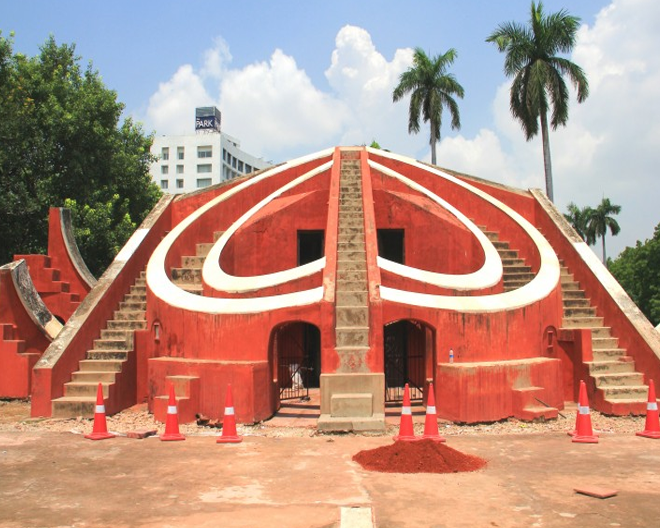
Lotus Temple, Delhi
This temple is built in the shape of a lotus flower and is the last of seven Major Bahai's temples built around the world. Completed in1986 it is set among the lush green landscaped gardens. The structure is made up of pure white marble. Architect Furiburz Sabha chose the lotus as the symbol common to Hinduism, Buddhism, Jainism and Islam. Adherents of any faith are free to visit the temple and pray or meditate.
Around the blooming petals there are nine pools of water, which light up, in natural light. It looks spectacular at dusk when it is flood lit.
It is at a distance of 15 Km from Amity University and the sight can be access by traveling through road and the nearest metro station to Lotus Temple is Nehru Place metro station.
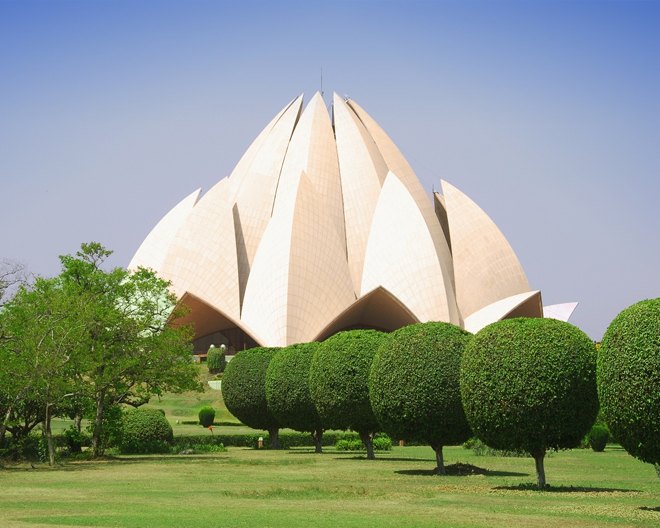
Purana Qila, Delhi
Purana Qila Old Fort), is the oldest fort among all forts in Delhi and, the oldest known structure of any type in Delhi. Purana Qila, situated on the banks of Yamuna, was constructed by the Pandvas as Indraprastha 5000 years ago, during the period of the Indus valley Civilisation. Archaeological Survey of India (ASI) carried out excavations at Purana Qila and its findings and artefacts are exhibited at the Archaeological Museum, Purana Qila. This includes Painted Grey Ware, dating 1000 BC, and various objects and pottery signifying continuous habitation Mauryan to Sunga, Kushana, Gupta, Rajput,Delhi Sultanate and Mughal periods.
It is at a distance of 15 Km from Amity University and the sight can be access by traveling through road and the nearest metro station to Purana Qila is Pragati Maidan metro station.
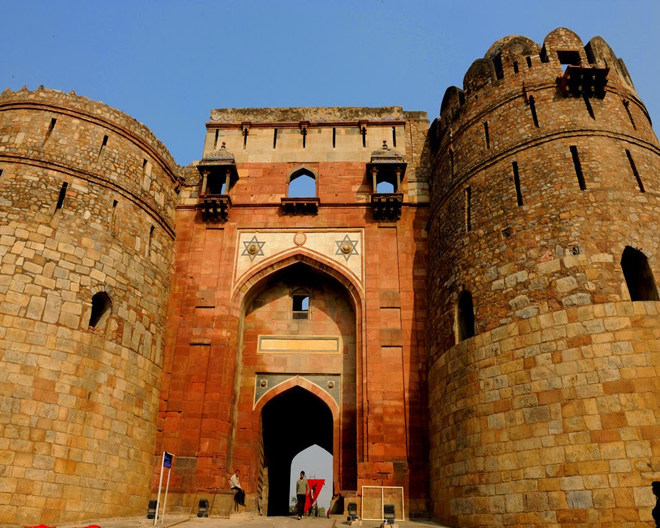
Delhi Zoo
National Zoological Park(originally Delhi Zoo) is a 176-acre (71 ha) zoo near the Old Fort in Delhi, India. A 16th-century citadel, a sprawling green island and a motley collection of animals and birds, all is in the middle of a burgeoning urbane Delhi. The zoo is home to about 1350 animals representing almost 130 species of animals and birds from around the world including chimpanzee, hippopotamus,spider monkey,African wild buffalo,Giraffes,Gir lion, and Zebras migratory birds like peafowl, and well ashyenas,macaques, and jaguars in the swamps that were designed for water birds. In the center of the zoo is the underground reptile house.
The zoo can be seen on foot or using a battery-operated vehicle which can be rented at the zoo.Visitors are not permitted to bring any food other than drinking water, but there is a canteen in the zoo.
The Delhi Zoo or National Zoological Park located next to Purana Qila. Tourists can either take local buses from various points within the city or they can hire auto-rickshaws and taxis or metro rail. The zoo is known as ‘chiriyaghar’ among residents of Delhi. Nearest metro station is Khan Market.

Teen Murti Bhawan, Delhi
Situated at the erstwhile residence of Late Jawaharlal Nehru, the first Prime Minister of India, Nehru Museum & Planetarium is the best place to learn about the history of the Independence Movement of India. The museum offers photographs of Jawaharlal Nehru in various phases of his life. The colonial building structure has high ceilings, teak panels, spacious verandas and well-maintained gardens. Prior to independence, this building was the official residence of the Commander-in-Chief of the British forces in India. Nehru lived here for 16 years. Also known as Trimurti Bhawan, it now houses the museum, a library and a planetarium dedicated to Nehru.
It is situated at a distance of 21 Km from Amity University and the comfortable visit to the site can be carried out by Metro. Nearest metro station is Udyog Bhavan.
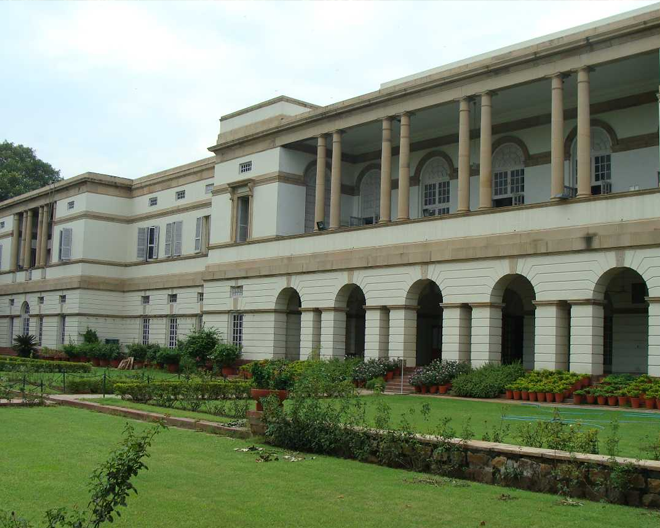
Kalka-Shimla-Toy-Train, Shimla
Taking a trip on the historic UNESCO World Heritage Kalka-Shimla toy train is like traveling back in time. The railway, built by the British in 1903 to provide access to their summer capital of Shimla, provides one of the most scenic train journeys in India. It enlivens passengers as it gradually winds its way steeply upwards along the narrow track, though mystical mountains and pine forests. Kalka and Shimla are located just north of Chandigarh, in India's mountainous northern state of Himachal Pradesh. The captivating train route connects both places. It runs for 96 kilometers (60 miles) though 20 railway stations, 102 tunnels, 800 bridges, and an incredible 900 curves. The longest tunnel, which stretches for more than a kilometer, is near the main railway station at Barog. The most spectacular scenery occurs from Barog to Shimla. The train's speed is greatly restricted by the steep gradient that it has to climb, but this allows for plenty of fascinating sightseeing along the way.
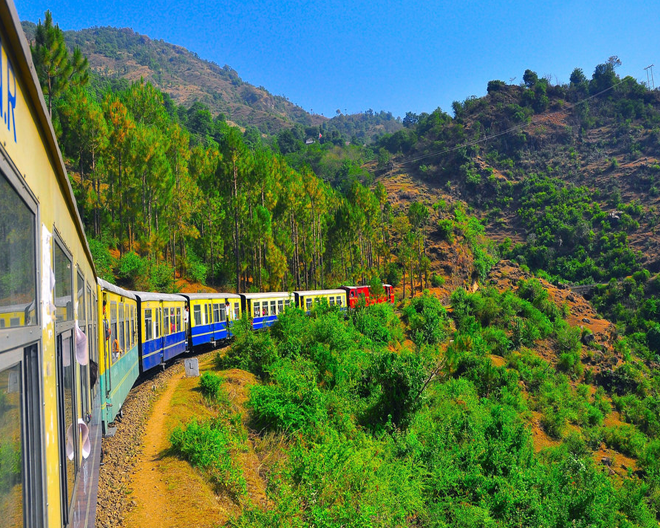
Hawa Mahal, Jaipur
The renowned 'Palace Of The Winds', or Hawa Mahal, is one of the prominent tourist attractions in Jaipur city. Located in the heart of Jaipur, this beautiful five-storey palace was constructed in 1799 by Maharaja Sawai Pratap Singh who belonged to Kachhwaha Rajput dynasty. The main architect of this palace built of red and pink sandstone. The main intention behind the construction of the Mahal was to facilitate the royal women and provide them a view of everyday life through the windows, as they never appeared in public.
Jaipur is at a distance of 284 Km from Noida and take nearly 5 hours to travel by bus. City Palace, Jaipur
Located in the heart of the Pink City Jaipur, the City Palace was where the Maharaja reigned from. This palace also includes the famous 'Chandra Mahal' and 'Mubarak Mahal', and other buildings which form a part of the palace complex. The palace is located towards the northeast side of central Jaipur and has many courtyards and buildings. The palace was built between 1729 and 1732 AD by Sawai Jai Singh II. Today, the 'Chandra Mahal' has been turned into a museum which is home to unique handcrafted products, various uniforms of the rulers and many more things pertaining to the royal heritage of the City Palace. Other nearby tourist attraction in Jaipur are
•Jal MahalGovernment
•Central Museum
•Jantar Mantar.
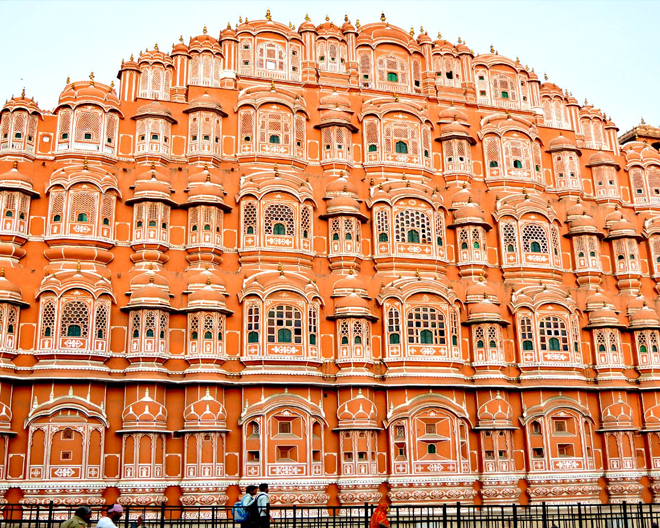
Nainital Lake, Nainital
Located at an altitude of 1,938mts above sea level, Nainital derives its name from Naini Lake, a prominent tourist spot of Nainital. Nainital is located in the Kumaon region and is popularly known as the Lake District of India. Nainital is famous for the Naini Lake where it is believed that Lord Shiva performed his tandava with Parvati’s body. Nainital Lake, a natural freshwater body, situated amidst the township of Nanital in Uttarakhand State of India, tectonic in origin, is kidney shaped or crescent shaped and has an outfall at the southeastern end.
Nainital Lake is one of the four Lakes of Kumaon hills, the other three lakes are the Sattal Lake, the Bhimtal Lake and the Naukuchiyatal Lake. The lake is bounded by the high and steep Naina peak on the North West side, by the Tiffin Top to the south west side and snow view peaks on the north.
Some other places in Nainital are Sattal Lake, Bhimtal Lake Naukuchiyatal Lake, Naina Devi Temple, Zoo, Aerial Ropeway, Snow View Point, Eco Cave Garden,Land’s End. It is 276 Km from Delhi and can be reach to this place in 4 hour 30 min by bus.
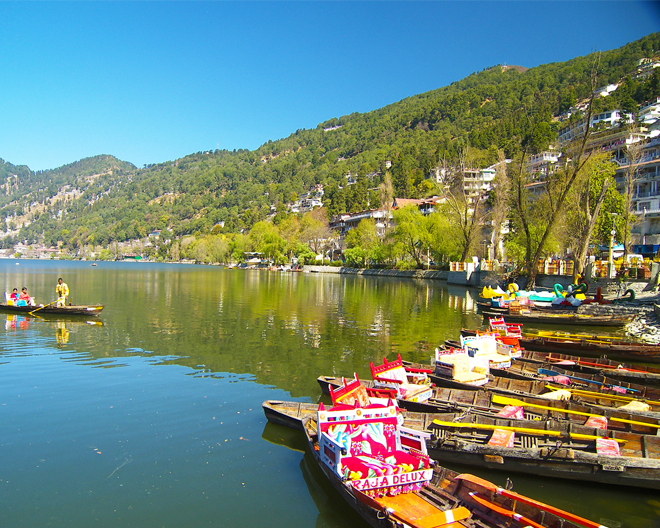
Keynote/Invited Speakers of SPIN-2020

Dr. Alvaro Rocha, University of Coimbra, Portugal

Dr. Pavel Loskot, College of Engineering, Swansea University, United Kingdom

Dr. Yury Shestopalov, University of Gavle, Sweden

Dr. Teruaki Hayashi, The University of Tokyo, Japan

Israel Koren,University of Massachusetts, USA

Prof. Wahied G. Ali Abdelaal, Affiliated to Ministry of Military Production, Egypt

Prof. Dr. Sven-Hendrik Voss Beuth Hochschule fr Technik Berlin University of Applied Sciences Luxemburger Strae

Dr Sushank Chaudhary,Fujian Institute of Research on the Structure of Matter Chinese Academy of Sciences, china
Dr. Sunil Vadera,University of Salford, Manchester

Dr. Rafael F. S. Caldeirinha, Instituto de Telecomunicações, Leiria, Portugal

Dr. Ahmed Abdelgawad, Central Michigan University, USA
Prof. Afaq Ahmad , Sultan Qaboos University, Muscat, Oman

Prof.Le Thuy, SAN JOSÉ STATE UNIVERSITY
Dr. John Healy,Belfield,University College ,Dublin, Ireland
Prof. Dr. Karl Christoph Ruland,University of Siegen, Faculty of Science and Engineering
Prof. Dr. Abbas Omar,University of Magdeburg, Magdeburg, Germany
Professor Magnus Isaksson,University of Gävle, Faculty of Engineering and Sustainable Development
Dr Jacob Scharcanski,Instituto de Informática UFRGS - Av. Bento Goncalves, Brazil
Dr. Yejun He,Shenzen University, China
Dr Sheel Aditya, Nanyang Technical University, Singapore
Dr. Héctor J. De Los Santos,NanoMEMS Research, LLC Irvine, CA
MAKSYM IEVLANOV,National University of Radio Electronics, National University of Kharkiv ,Ukraine
Dr Shao Ying Zhu,Birmingham City University UK
Brian Barsky, University of California, Berkeley
Martin Schwark,Teamleader ZV4.3 Central Services, Applications und Bioinformatics ZV4 Information Technology Robert Koch-Institute Seestraße 10 13353 Berlin ,Germany
Prof. Boris Novikov, Department of Informatics HSE university, St. Petersburg, Russia
Keynote/Invited Speakers of SPIN-2019

Dr. Sastri Kota, University of Oulu, Finland

Prof. Magdy A. Bayoumi, University of Louisiana at Lafayette, USA

Dr. Jeyaprakash Chelladurai, Lock Haven University of Pennsylvania, USA

Dr. Alvaro Rocha, University of Coimbra,Portugal

Dr. Cher Ming Tan, Chang Gung University, Taiwan

Dr. Kazuya Kobayashi, Chuo University, Japan

Dr. Teruaki Hayashi, The University of Tokyo, Japan

Dr. Yury Shestopalov, University of Gavle, Sweden

Dr. Mehmet Emir KOKSAL, Ondukuz Mayis University, Turkey

Prof. Dr. Saad Mekhilef,University of Malaya, Kuala Lumpur, Malaysia

Prof. Wahied G. Ali Abdelaal, Affiliated to Ministry of Military Production, Egypt

Dr. Ahmed Abdelgawad, Central Michigan University, Mount Pleasant, USA

Prof. Pavel Zahradnik, Professor, Czech Technical University, Prague, Czech Republik

Dr. Prof Yong Chae Jeong, Chonbuk National University, Jeonju, South Korea

Dr. Alexander B. Samokhin, Member of Electromagnetics Academy, USA.

Dr. Boris Lagovsky, Russian Technological University, Moscow, Russia

Prof. Satoshi Yagitani, Kanazawa University, Japan

Dr Qing Huo Liu, Professor, Duke University, USA

Prof. Miguel Lopez Benitez, University of Liverpool, UK

Dr. Keshab K. Parhi, University of Minnesota, Minneapolis, USA

Dr. Houssain Kettani, Dakota State University, Madison, South Dakota, USA

Dr. Pavel Loskot, Senior Lecturer, Swansea University, United Kingdom

Dr. Victor Govindaswamy, Concordia University Chicago, USA

Dr. Carlos M. Travieso-Gonzalez, Universidad de Las Palmas de Gran Canarita, SPAIN

Prof. Juan Jose Garcia Bellaterra (Cerdanyola del Vallès) Barcelona Spain

Dr. Rafael F. S. Caldeirinha, Instituto de Telecomunicações, Leiria, Portugal

Dr. Héctor J. De Los Santos, NanoMEMS Research, LLC, Irvine, California, USA

Dr. Sheel Aditya,Nanyang Technological University, Singapore

Dr George A. Ropokis, CentraleSupélec, Campus Rennes, Rennes, France
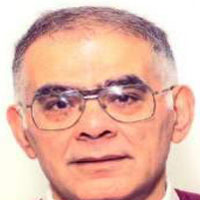
Dr. Yahia Antar, Royal Military College of Canada, Canada

Dr Elyas Palantei, Universitas Hasanuddin, Makassar, Indonesia

Dr. Shinichiro Ohnuki (Ph.D.), Nihon University, Kanda, Surugadai,

Prof. Brian Barsky, University of California, Berkeley, USA

Prof. Giuliano Manara, Professor, College of Engineering, University of Pisa, Italy

Prof. Raj Mittra, University of Central Florida, USA

Dr. Dinesh Manandhar, The University of Tokyo, Japan

Dr. Yasuhide Hobara, The University of Electro-Communications (UEC), Tokyo, Japan

Dr. Kumar Vijay Mishra, University of Iowa - IIHR, 100 Stanley Hydraulics Lab, Iowa City, IA

Dr. Prabhakar H. Pathak, The Ohio State University College of Engineering, Columbus, US

Dr. Demetrios N. Matsakis, US Naval Observatory, 3450 Massachusetts Ave, United States

Dr. Phil Menard, University of South Alabama, Alabama (USA)

Professor Christodoulos Chamzas, Democritus University Greece
Keynote/Invited Speakers of SPIN-2018



































Keynote/Invited Speakers of SPIN-2017






























Keynote/Invited Speakers of SPIN-2016






























Keynote/Invited Speakers of SPIN-2015






























Keynote/Invited Speakers of SPIN-2014












